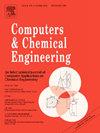使用 CUSUM 方法基于模型的液氢加注系统故障检测算法
IF 3.9
2区 工程技术
Q2 COMPUTER SCIENCE, INTERDISCIPLINARY APPLICATIONS
引用次数: 0
摘要
全球日益关注氢能在实现碳中和方面的作用,尤其是在交通领域。为燃料电池电动汽车(FCEV)建立和运营加氢站的重要性日益凸显。本研究提出了一种基于模型的故障检测算法,以提高大容量液氢(LH2)加氢站的安全性。首先,使用 Aspen HYSYS 对 LH2 加氢系统进行建模,估算储氢罐的传热系数,以满足每天 0.9% 的正常蒸发率 (NER) 规范。其次,通过危险与可操作性研究 (HAZOP) 确定各种故障情况,并生成正常和故障情况下的模拟数据。最后,开发了一种利用累积求和(CUSUM)的故障检测算法,其阈值由 HAZOP 分析的风险水平决定。这样,随着风险水平的增加,故障检测也会更加严格。该算法成功识别了所有 11 种情况下的故障。本文章由计算机程序翻译,如有差异,请以英文原文为准。
Model-based fault detection algorithm for liquid hydrogen refueling system using CUSUM method
The global focus on the role of hydrogen energy in achieving carbon neutrality is increasing, particularly in transportation. Establishing and operating hydrogen refueling stations for fuel cell electric vehicles (FCEVs) are gaining prominence. This study proposes a model-based fault detection algorithm to enhance safety at large-capacity liquid hydrogen (LH2) refueling stations. First, the LH2 refueling system is modeled using Aspen HYSYS, estimating the heat transfer coefficient of the storage tank to meet the normal evaporation rate (NER) specification of 0.9 % per day. Second, diverse fault scenarios are identified via a Hazard and Operability Study (HAZOP), and simulation data are generated for the normal and fault scenarios. Finally, a fault detection algorithm utilizing the cumulative summation (CUSUM) is developed, with its threshold determined by risk levels analyzed in HAZOP. This allowed for tighter fault detection as risk levels increased. The algorithm successfully identified faults for all 11 scenarios.
求助全文
通过发布文献求助,成功后即可免费获取论文全文。
去求助
来源期刊

Computers & Chemical Engineering
工程技术-工程:化工
CiteScore
8.70
自引率
14.00%
发文量
374
审稿时长
70 days
期刊介绍:
Computers & Chemical Engineering is primarily a journal of record for new developments in the application of computing and systems technology to chemical engineering problems.
 求助内容:
求助内容: 应助结果提醒方式:
应助结果提醒方式:


